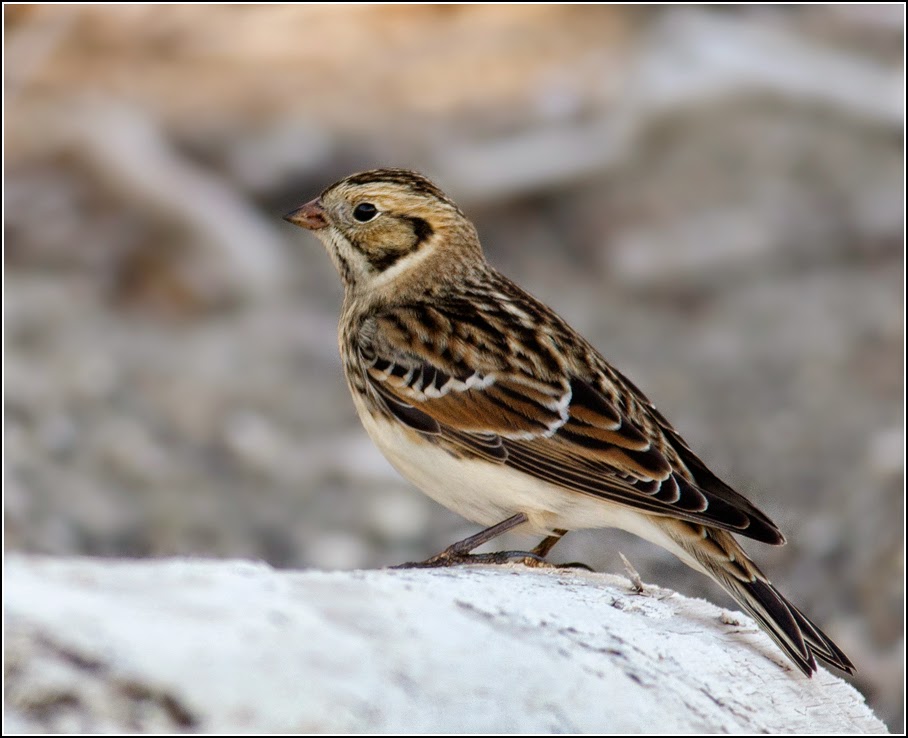The autumn of 2011 was another great one along the river, and at times it was possible to see Razorbill, Black Vultures, Fish Crows, Slaty-backed Gull, Franklin's Gull, Black-legged Kittiwake and California Gull all in one day. Some of the other notable rarities to turn up along the Niagara River in years past include Common Eider, Great Cormorant, Ivory Gull, Ross's Gull, Smew, etc.
This year we hadn't yet seen our annual late fall "mega" along the river - something that changed this morning.
While I was out in the field working yesterday morning I saw the Ontbirds birds by Craig Corcoran about the Eurasian Tree Sparrow that Brianne Corcoran had spotted at their bird feeders in front of their house along the Niagara Parkway south of Niagara-on-the-Lake.
What the heck would a Eurasian species be doing along the Niagara River, you may ask? Twelve Eurasian Tree-Sparrows were actually introduced into the vicinity around St. Louis, Missouri in the year 1870, and though they have never been as successful as their relative (the ubiquitous House Sparrow) they have increased in number to around 15,000 birds, spreading out into nearby Illinois and Iowa. Because this species has become well established for many years they are considered "countable" by the American Ornithological Union (AOU). The same goes for other introduced species like Ring-necked Pheasant, Eurasian Collared-Dove, and even Mute Swan, House Sparrow and European Starling. Here is an ebird map showing the North American range of Eurasian Tree Sparrow. The darker purple squares indicate higher relative abundance.
 |
| Eurasian Tree Sparrow sightings submitted to eBird (as of November 26, 2014) |
As you can see from the above map there have actually been a few sightings in Ontario in the past - including four prior to this year that have been accepted by the Ontario Bird Records Committee. However, few of these birds have lingered for more than a day (or a few hours) in one location.
1 in Eastnor Township, Bruce 16-18 Feb, 1994 (Russell Ferguson, Katherine Ferguson)
1 at Sturgeon Creek, Essex 20 May, 1999 (Paul D. Pratt)
1 at Leamington, Essex 24 Aug, 2003 (Jeanette B. Pepper)
1 at Port Burwell, Elgin 10 May, 2008 (Aaron Allensen)
This year at least two prior sightings have occurred. Alan Wormington found two at Terrace Bay, Thunder Bay on May 18, and one was banded at the tip of Long Point, Norfolk on 19 May.
At any rate, I was determined to finish my work for the day early and drive down to Niagara-on-the-lake before dark to look for the bird, as they are usually one day wonders. A good rule of thumb when chasing a rare bird is to get there the day it is found. So many times a rarity is seen until dusk but not relocated in subsequent days.
I finished up my surveys and hit the road by 1:15 PM, spurred on by a positive Ontbirds post by Barb Charlton that the bird was still attending the feeder.
I rolled in shortly after 3:00 PM to see about a dozen cars parked along the road in front of the house and a small group of birders standing around. It turns out that the sparrow hadn't been seen since early that afternoon, nor had the big flock of House Sparrows that it was associating with. There was some thought that the large amount of birders present may have prevented the sparrows from returning, but that is hard to determine of course. A group of 60 or so House Sparrows came in eventually (smaller than the 200 or so seen earlier), but the bird was not with them. Compared to the closely related House Sparrow, Eurasian Tree-Sparrow has a rufous/brown cap, black auriculars (ear), white surrounding the auriculars, and a white collar. It is also slightly smaller than House Sparrow with a slightly smaller bill.
I decided that I was going to stick it out until dusk since I had no other pressing plans that evening and dusk was before 5:00 PM, leaving me lots of time to get back home afterwards and still do a few hours of work.
Most birders cleared out around 4:20 PM as few birds were seen around the feeders and the Eurasian Tree Sparrow was MIA. I ended up being the last birder there, so I sat quietly in my car and kept an eye on the feeders. With fewer people around, more birds started coming in to the feeders- a pair of Pine Siskins, some Dark-eyed Juncos, a few Mourning Doves, and half a dozen Northern Cardinals.
I was actually on the phone with Jeremy Bensette when a sparrow-sized bird landed on the feeder. I was shocked to see it was the Eurasian Tree Sparrow! After a few quick expletives I hastily hung up on Jeremy and watched the bird. Surprisingly it was all by itself, not associating with any House Sparrows as it had earlier in the day. It only stayed on the feeder for about 20 seconds. I ended up spending the last ten seconds of the observation fumbling with my camera's autofocus and failing to get even a single photo off. No photos and a 10-second look are better than no looks at all though.
Good luck to all those who look today! I just saw an update that it finally returned to the feeder, so no doubt many people have added it to their Ontario list. I'll be returning on the weekend for some Niagara River gulling so hopefully I can drop in and grab some photos. In the meantime, here is a link to some taken by Barb Charlton yesterday.
https://www.flickr.com/photos/95159356@N06/15691699440/
https://www.flickr.com/photos/95159356@N06/15259358813/
Good birding!










































